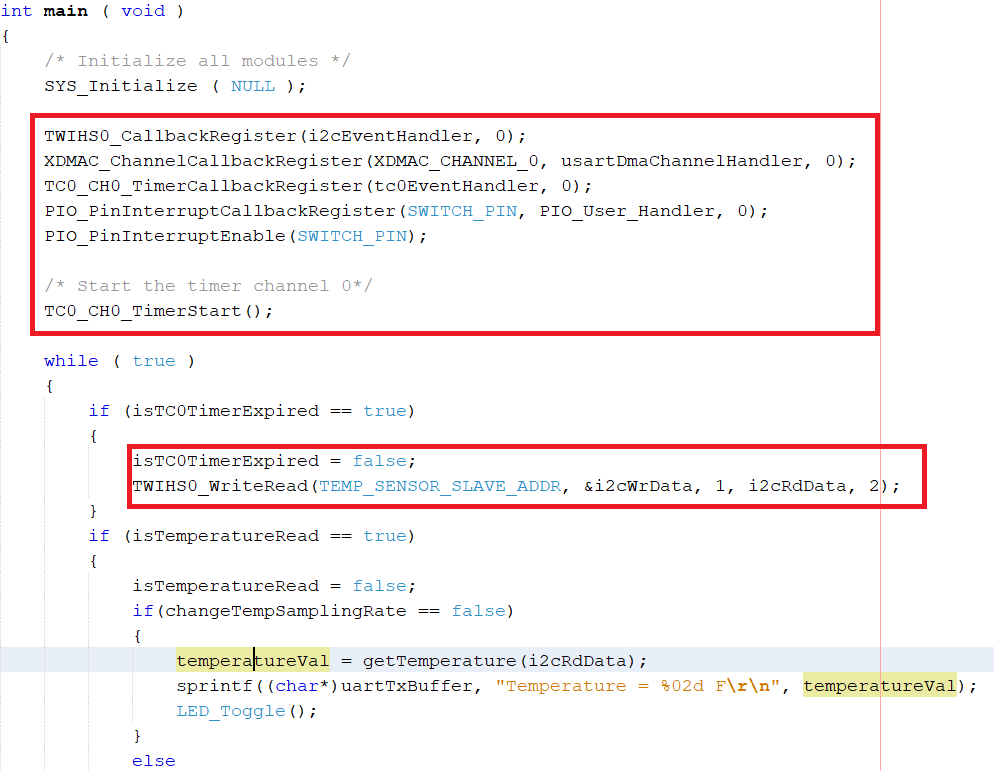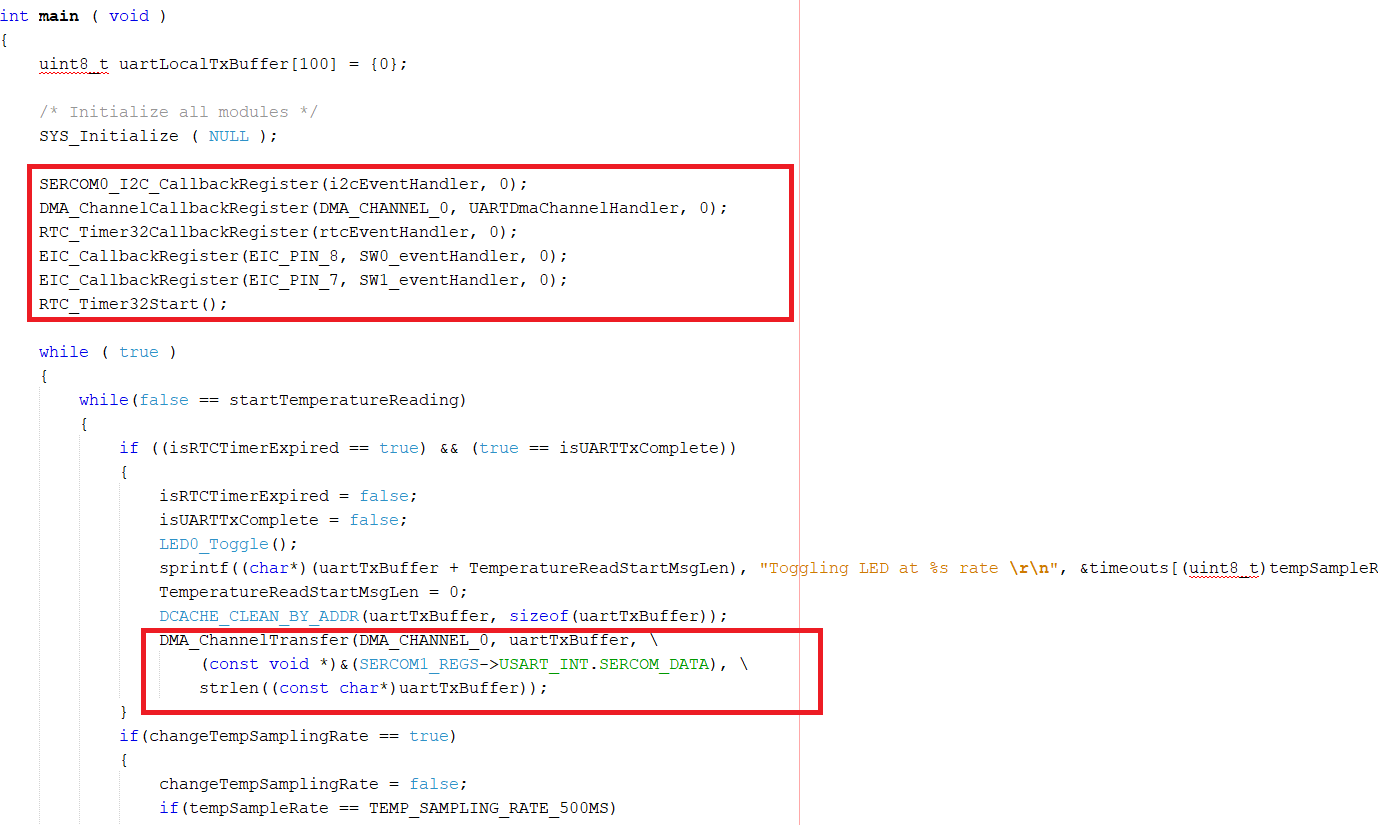6 FAQs
- Is the existing code on the SAM
E70/S70/V70/V71 devices binary compatible with flashing on the PIC32CZ CA80/9x
devices?
Answer: No, it is not binary compatible.
- Can code developed for the SAM
E70/S70/V70/V71 be directly compiled and run on the PIC32CZ CA80/CA9x
devices?Answer: No, direct compilation is not feasible.
- Peripheral Identification: Identify corresponding peripherals on the PIC32CZ CA80/CA9x using the provided guide.
- Peripheral Configuration: Reconfigure peripherals in the code to match the specific requirements of the PIC32CZ CA80/CA9x and generate Peripheral Library (PLIB) level code.
- Is there a guide available for
migrating projects from the SAM E70/S70/V70/V71 to the PIC32CZ
CA80/CA9x?Answer: Yes. This document provides detailed compatibility information between the two microcontroller families.
- Code Examples: Includes code snippets for both device families to demonstrate the migration process.
- Migration Guide: Refer to the specific migration guide for detailed instructions on porting the application.
This section of the document will take these questions into consideration and will explain to the user what needs to be done.
Compare the Getting started projects of the SAM E70/S70/V70/V71 and the PIC32CZ CA80/CA9x.
The following code shows callback function registrations for TWIHS, XDMAC, TC0, and PIO for getting started application on the SAM E70/S70/V70/V71.

This application reads the current room temperature from the temperature sensor on the I/O1 Xplained Pro Extension. The temperature read is displayed on a serial console periodically every 500 milliseconds. The periodicity of the temperature values displayed on the serial console is changed to 1 second, 2 seconds, 4 seconds, and back to 500 milliseconds every time the user presses the switch SW0 on the SAM E70 Xplained Ultra Evaluation Kit. Therefore, an LED, LED3, is toggled every time the temperature is displayed on the serial console.
The following code shows callback function registrations for SERCOM, DMAC, RTC, and EIC for getting started application on the PIC32CZ CA80/CA9x.

This application demonstrates an LED toggle (LED0 toggles when the switch SW0 is pressed) on a timeout basis and prints the LED toggling rate on the serial terminal. The periodicity of the timeout will change from 500 milliseconds to 1 second, 2 seconds, 4 seconds, and back to 500 milliseconds every time the user presses the switch SW0 on the PIC32CZ CA90 Curiosity Ultra Development Board.
The demo application has extended functionality to print the current room temperature periodically when the XPRO connector is plugged into the I/O1 Xplained Pro Extension Kit.
Both applications achieve the same objective with the help of different peripherals, as mentioned in the above sections.
- TWIHS is compatible with the I2C protocol through which temperature is read in both applications.
- XDMAC on the SAM E70/S70/V70/V71 family along with USART are used to print the data on a serial console while this is done with the help of DMAC and SERCOM configured as USART on the PIC32CZ CA80/9x application.
- To toggle the LED on a timeout basis the SAM E70/S70/V70/V71 family uses TC timer instance while the PIC32CZ CA80/CA9x uses RTC.
- As seen in the above comparison between PIO and EIC, both are used to trigger interrupts and in both applications users can see in the above picture that PIO and EIC callback functions have been registered to trigger interrupts when the user presses a switch.
In this way, with the support of compatible peripherals on the PIC32CZ CA80/CA9x family, traditional users of the SAM E70/S70/V70/V71 series can migrate to the PIC32CZ CA80/9x family, which offers extended security and memory features for the user.
